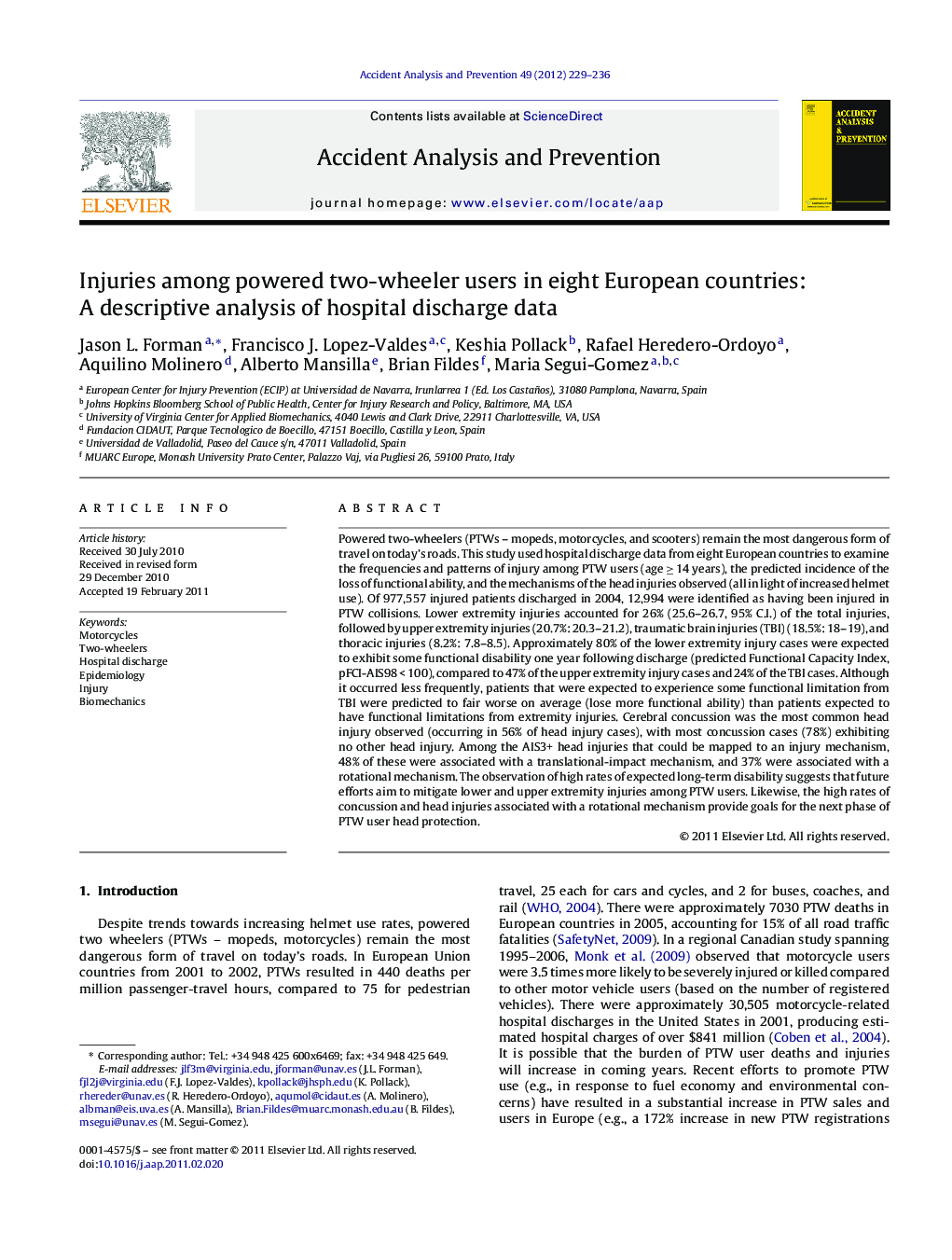| کد مقاله | کد نشریه | سال انتشار | مقاله انگلیسی | نسخه تمام متن |
|---|---|---|---|---|
| 572652 | 1452948 | 2012 | 8 صفحه PDF | دانلود رایگان |

Powered two-wheelers (PTWs – mopeds, motorcycles, and scooters) remain the most dangerous form of travel on today's roads. This study used hospital discharge data from eight European countries to examine the frequencies and patterns of injury among PTW users (age ≥ 14 years), the predicted incidence of the loss of functional ability, and the mechanisms of the head injuries observed (all in light of increased helmet use). Of 977,557 injured patients discharged in 2004, 12,994 were identified as having been injured in PTW collisions. Lower extremity injuries accounted for 26% (25.6–26.7, 95% C.I.) of the total injuries, followed by upper extremity injuries (20.7%: 20.3–21.2), traumatic brain injuries (TBI) (18.5%: 18–19), and thoracic injuries (8.2%: 7.8–8.5). Approximately 80% of the lower extremity injury cases were expected to exhibit some functional disability one year following discharge (predicted Functional Capacity Index, pFCI-AIS98 < 100), compared to 47% of the upper extremity injury cases and 24% of the TBI cases. Although it occurred less frequently, patients that were expected to experience some functional limitation from TBI were predicted to fair worse on average (lose more functional ability) than patients expected to have functional limitations from extremity injuries. Cerebral concussion was the most common head injury observed (occurring in 56% of head injury cases), with most concussion cases (78%) exhibiting no other head injury. Among the AIS3+ head injuries that could be mapped to an injury mechanism, 48% of these were associated with a translational-impact mechanism, and 37% were associated with a rotational mechanism. The observation of high rates of expected long-term disability suggests that future efforts aim to mitigate lower and upper extremity injuries among PTW users. Likewise, the high rates of concussion and head injuries associated with a rotational mechanism provide goals for the next phase of PTW user head protection.
► Lower extremity injuries were the most common injuries among powered-two-wheeler (PTW) users.
► This was followed by upper extremity injury and traumatic brain injury.
► Most cases of predicted functional disability were caused by lower or upper extremity injury.
► Thirty-seven percent of severe (AIS3+) head injuries were associated with a rotation mechanism.
► These data suggest research priorities in light of trends towards increasing helmet and PTW use.
Journal: Accident Analysis & Prevention - Volume 49, November 2012, Pages 229–236